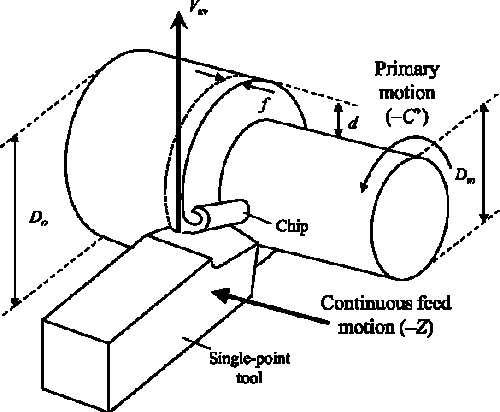|
Type of material |
The diameter of the work or
drill bit |
Specific machining
operation |
|
As a general rule of thumb, the
harder the material the lower the speed and feed and
vice versa. |
As a general rule of thumb, the
larger the diameter of work the lower the speed and
feed and vice versa. |
Different cutting operations will
require different cutting speeds. For example screw
cutting will be slower than parallel turning. |
Other factors influencing cutting speed and feed:
- Type of cutting tool
- Type of cutting fluid
- Size of lathe
- Quality of the lathe
- Rigidity and wear on lathe components
Feed rate
Lathe Feed:
The feed of a lathe is the distance the cutting tool
advances along the length of the work for every revolution
of the spindle. For example, if the lathe is set for a .0.5
mm feed, the cutting tool will travel the length of the work
.0.5mm for every complete turn that work makes. The feed of
a lathe is dependent upon the speed of the lead screw or
feed rod. The speed is controlled by the change gears in the
quick change gearbox.
Whenever possible, only two cut should be taken to bring a
diameter cut. Since the purpose of a rough cut is to remove
excess material quickly and surface finish is not too
important. A coarse feed should be used. The finishing cut
is used to bring the diameter to size and produce a good
surface finish and therefore a fine feed should be used.
The recommended feeds for cutting various materials when
using a high speed steel cutting tools listed in table
below. For general purpose machining a .15 – ..5 mm feed for
roughing and a .3 to .1 mm feed for finishing is
recommended.
|

